|
Think back to when you were a child. What did you want to be when you grew up? Answers to this question typically include teacher, doctor, lawyer, or actor. Even today, so many students declare a pre-med pathway as they enter college. Did you ever think about why our responses to this question were always so similar? For me, I know that those careers were the options I either saw every day or were the careers everyone generally talked about. I had a very limited understanding of what my career options could possibly be.
Growing up, I did have some experiences that inspired other career ideas. At one point I wanted to become a meteorologist because of the Omniplex weather stations. At another point, I dreamed about becoming a pilot because I was involved with the Civil Air Patrol. But still, when I entered college, I declared a pre-med pathway. It wasn't until I connected with a career counselor my third year of college that my world exploded with options I never even heard about! It was quite overwhelming.
Thinking back on these experiences, I started to wonder how exposing students to career choices early could better support them as they explore their future. I've been thinking about ways to inspire more interest in science, technology, engineering, and math (STEM) that moves beyond the typical lists that say "scientist" or "engineer." People want to make an impact on the world, they want to help others, but so often the views of STEM careers are connected to people in lab coats working sterile laboratories, disconnected from society. Students need to be shown how STEM careers do play a vital role in our communities, how STEM careers contribute to improving life through innovation and sustainable solutions.
This month's newsletter will show you different ways you can expose students to the many career options available in the STEM fields, how STEM careers can positively impact our communities, and hopefully, inspiring more people to pursue careers in STEM. As March is Women's History Month, these particular resources highlight the contributions women have made in the sciences. Their roles and careers range from computer scientists, mathematicians, and engineers to meteorologists, paleontologists, nuclear physicists, and so much more!
Free Posters Celebrating Women Role Models in STEM
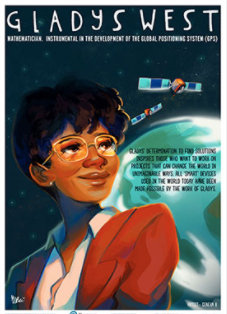
Nevertheless, a podcast celebrating women who are transforming teaching and learning, partnered with women artists to create eight posters of women recognized as role models in their fields of science, technology, engineering, and mathematics (STEM). These free posters are available in seven different languages, including French, German, Spanish, Italian, Portuguese, Brazilian, French Canadian, Simplified Chinese, and English.
Each poster includes the woman's name and a short description of her accomplishments. These accomplishments include a biotechnologist who co-founded Diagnostics for All, a non-profit that develops low-cost diagnostic devices specifically for the developing world. (connecting STEM career choices to helping others). Another is a technologist that co-founded Ushahidi Inc., a non-profit tech company that specializes in developing free and open-source software for changing how information flows in the world (connecting STEM career choices to social media). There is also an astronaut, pharmaceutical chemist and educator, mathematician, roboticist, and several scientists!
More information about each scientist/engineer is also provided on the Nevertheless website, along with information about the women artists that drew each poster.
|
Connecting Student Character Traits with Scientists
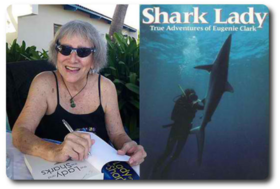
A few years ago I attended a session at a conference focused on developing young scientists. Jessica Fries-Gaither, the author of several NSTA Kids books, presented four steps she uses to ensure she's providing students the opportunity to see how they fit into the science world. One of these steps included connecting student character traits to scientists that might have those same traits. For example, some students might take risks so could be considered fearless. This particular trait would have been useful for Eugenie Clark, popularly known as the Shark Lady.
Eugenie Clark was an ichthyologist (a branch of zoology) known for her research on shark behavior. She was considered a pioneer in the field of scuba diving for research purposes and promoted marine conservation. Another common character trait is kind, which would describe Wangari Maathai as she had a deep passion for environmental protection and developed the Green Belt Movement, an organization that focuses on planting trees to replenish the environment and improve the quality of life. Maathai received a Nobel Peace Prize for her efforts.
Strong and resilient would easily describe the women who helped launch men into space, including Katherine Johnson, Dorothy Vaughan, Mary Jackson, Margaret Hamilton, and JoAnn Morgan.
Creativity is a useful trait for out-of-the-box ideas, like the ones Ada Loveless had when she became the very first person to articulate the idea that machines could manipulate symbols in accordance to rules (computer programming).
Character traits define our behavior and attitude. Leveraging these traits as connections to future careers can potentially inspire student interest in STEM fields.
|
Connecting Science Content to Women in Science

Women have been scientists throughout history but are often not included in textbooks. Finding connections to science content and the women who contributed to those fields can be a difficult task. So I've gathered a collection of women scientists below to hopefully help!
Physical Sciences
Teaching chemistry? Introduce Marie-Anne Lavoisier! Marie-Anne Lavoisier (1758-1836) was a French chemist, married to Antonine Lavoisier, now known as the father of modern chemistry. Madame Lavoisier conducted research with her husband, edited her husbands' reports, and drew accurate drawings of their experimental setups. These acts helped many other scientists better understand their research methods and results, ultimately rebuilding the field of chemistry.
|
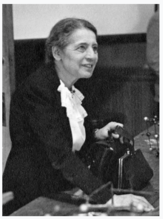
Teaching physics? Introduce Lise Meitner! Lise Meitner (1878-1968) was an Austrian physicist whose work in nuclear physics (studying the nucleus of uranium) contributed to our understanding of nuclear fission. However, the Nobel Committee only awarded the Nobel Prize to her partner, Otto Hahn, in 1944. Several scientists called her exclusion "unjust," while the Nobel Committee, and even her partner, tried to rationalize her exclusion and their failure to recognize her contributions. Lise Meitner did receive several posthumous honors, including having the 109th element, meitnerium, named after her.
|
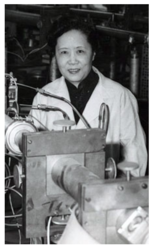
Another chemist that contributed to our understanding of nuclear physics is Chien-Shium Wu (1912-1997). Dr. Wu was a part of the Manhattan Project during World War II (the team that developed the atomic bomb), where she helped develop the process for separating uranium metal into various isotopes. She is best known for the Wu Experiment, which disproved a hypothetical physical law, paving the way for several of her colleagues to win the 1957 Nobel Prize in Physics. Dr. Wu was never recognized for her work. Later in her career, she became outspoken about sexism in the sciences.
|
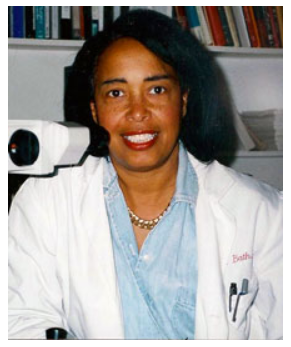
Life Sciences
Teaching anatomy? Introduce Patricia Bath! Patricia Bath (1942) is an ophthalmologist and the first Black person to serve as an ophthalmology resident at New York University, the first woman on staff at the Jules Stein Eye Institute, and the first Black woman doctor to receive a patent for medical purposes. Dr. Bath invented the Laserphaco Probe in 1981, which quickly and painlessly uses a laser to dissolve cataracts in the eye. This device is now used worldwide to help prevent blindness due to cataracts.
|

Teaching insect life cycles? Introduce Maria Merian! Maria Merian (1647-1717) was a naturalist (observational methods of study, rather than experimenting), an entomologist (the study of bugs), and a botanical illustrator. She is rated as being one of the greatest botanical artists ever! From flowers to insects, Merian created incredibly detailed drawings. As one of the early naturalists to observe insects directly, Merian disproved the idea that moths and butterflies spontaneously generated (as was believed), and rather went through a process called metamorphosis. Through her drawings, Merian documented and described the life cycles of 186 insect species, from the plants the insects ate, the timing of their metamorphoses, and noted the behavior she observed during these processes.
|
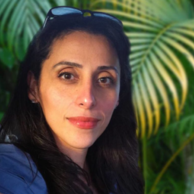
Teaching environmental science? Introduce Nicole Hernandez Hammer! Nicole Hernandez Hammer (1976) is a Guatemalan-Cuban-American sea-level researcher, climate-change expert, and environmental-justice advocate. Dr. Hernandez Hammer works to address the disproportionate impacts of climate change on low-income neighborhoods and communities of color across the U.S. Having lived in Guatemala and South Florida, she leverages her firsthand experience of the effect of rising sea levels to educate and mobilize the Latino community to understand and address the ways in which climate change negatively impacts them.
|
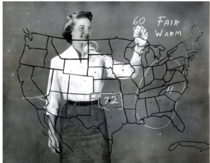
Earth and Space Sciences
Teaching weather? Introduce Lola Hall! Lola Hall (1933) is from Oklahoma City! While not a traditional scientist, Lola Hall was the first woman in the Southwest to enter the field of weather broadcasting, becoming known as the "Channel 9 Weather Girl." Ms. Hall excelled at broadcasting, serving in sales and weather roles at television and radio stations across the Oklahoma City area.
|
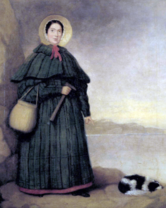
Have you heard the saying, "She sells sea shells by the sea shore?" This tongue twister is widely believed to be inspired by Mary Anning, only Ms. Anning was not selling ordinary shells, they were fossils! Mary Anning (1799-1847) was a paleontologist who became known around the world for discoveries she made in Jurassic marine fossil beds off the cliffs of the English Channel. Her findings contributed to changes in scientific thinking about prehistoric life and the history of the Earth.
|

Teaching about technology in space? Introduce Gay Jane Perez! Gay Jane Perez (1982) is a Filipino environmental and meteorological scientist. Dr. Perez is the first Filipino to win the ASEAN-US Science Prize for Women, an award to encourage promising female scientists working in Southeast Asia. She was recognized for her research using satellite data to improve agriculture precision farming. Dr. Perez was also responsible for leading the Philippines' Department of Science and Technology's microsatellite program that successfully sent their first microsatellite (Diwata-1) into space in 2016.
|

Teaching Astronomy? Introduce Sabrina Gonzalez Pasterski! Sabrina Gonzalez Pasterski (1993) is a Cuban-American physicist that has been described as the world's "next Albert Einstein." Dr. Gonzalez Pasterski studies black holes and spacetime, particularly trying to explain gravity within the context of quantum mechanics. Her work has been cited by Stephen Hawking and Andrew Strominger. She has been offered jobs by NASA and Blue Origin, an aerospace research and development company founded by Jeff Bezos, and she's an active advocate in promoting STEM education for girls all around the world, including the U.S., Cuba, and Russia.
|
Women and Science: Book Recommendations
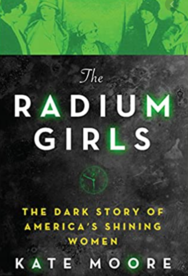
The Radium Girls: The Dark Story of America's Shining Women by Kate Moore
After the First World War, the radioactive element radium captured everyone's attention due to its unique and unusual properties. This popular new element was used to create medicinal and beauty products, including glittering powder women covered their bodies with to "light up the night like industrious fireflies." The scientific community knew of the dangers of using radium; however, public demand for glowing products contributed many to ignore this information until many women began to fall mysteriously ill. This book tells the story of female factory workers who contracted radiation poisoning from painting watch dials with self-luminous paint made from radium and their courageous battle that led to life-changing regulations, research into nuclear bombing, and ultimately save hundreds of thousands of lives.
|

The Code Breaker: Jennifer Doudna, Gene Editing, and the Future of the Human Race by Walter Isaacson
Jennifer Doudna is an American biochemist known for her pioneering work in CRISPR gene editing, for which she was awarded the 2020 Nobel Prize in Chemistry (along with Emmanuelle Charpentier). In 2012, Jennifer Doudna and her team published their findings that CRISPR-Cas9 could be programmed with RNA to edit genomic DNA, now considered one of the most significant discoveries in the history of biology. This book tells the story of how Jennifer Doudna overcame resistance to women in science as she was growing up to become one of the leading scientists in biochemistry and genetics, launching a revolution that changed the way scientists approach curing diseases and fending off viruses.
|
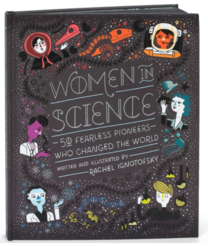
Women in Science: 50 Fearless Pioneers Who Changed the World by Rachel Ignotofsky
This book highlights the contributions of fifty notable women to the fields of science, technology, engineering, and mathematics (STEM) from the ancient to the modern world. Colorful illustrations, paired with descriptive biographies, celebrate the achievements of each woman who has paved the way for the next generation of female engineers, biologists, mathematicians, doctors, astronauts, physicists, and more!
|
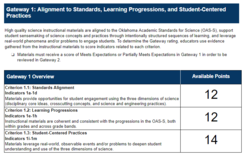
Instructional materials selection is an important district decision, and it is worth taking the time to find the best quality materials for students and teachers. The Oklahoma State Department of Education (OSDE) has just released the Oklahoma Science Instructional Materials Evaluation Rubric to help support districts with this process.
The use of evaluation tools provides districts and educators a deeper look into the strengths and limitations of instructional materials, to better identify high-quality programs. High-quality science instructional materials are aligned with the Oklahoma Academic Standards for Science (OAS-S), are comprehensive, and include engaging texts, problems, and assessments. Check out the resource, Finding High-Quality Science Materials, from the National Science Teaching Association to learn more about key features of standards-aligned science instructional materials.
|
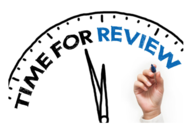
Have you ever wondered how you can give input on assessment items? Would you like to help with this process? The OSDE Assessment Office has now released the Item Review Committee (IRC) application! We are looking for 8th grade and high school science teachers interested in participating in this opportunity. There will not be 5th grade items to review this year as the OSDE needs two 8th grade committees to review the many additional items that address the new 2020 Oklahoma Academic Standards for Science. The IRC applications are due April 1st, the committee will be meeting the week of June 14th, and there will be a stipend for those selected to participate. If you have any questions about the IRC contact Samantha.Sheppard@sde.ok.gov, the Science Assessment Specialist.
|
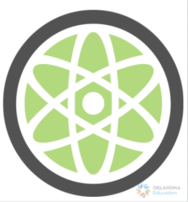
This year the OSDE Science Team started the OKScience Education 101 monthly virtual meetings to assist educators with understanding and implementing the 2020 Oklahoma Academic Standards for Science (OAS-S). The Science Team virtually meets with teachers across Oklahoma Wednesday evenings each month from 4:30-5:30 p.m. The next meeting will be Wednesday, March 31st and our topic will be leveraging formative assessment to support student learning. If you are interested in joining, register here.
Check out previously recorded sessions by using the links below:
|

Registration is now open!
This summer, the OSDE will partner with the University of Oklahoma and Northeastern State University to offer AP Summer Institutes (APSI). The Institutes will be offered online and are tuition-free to any Oklahoma educator (teachers will need to pay a $50 registration fee). Both universities will offer various sessions with the goal of reaching both veteran and novice AP teachers.
NSU APSI Offerings
- AP Art & Design
- AP Biology
- AP Calculus AB
- AP Calculus BC
- AP Chemistry
- AP Computer Science A
- AP Computer Science Principles
- AP English Language & Composition
- AP English Literature & Composition
- AP Human Geography
- AP Music Theory
- AP Physics
- AP Psychology
- AP Spanish
- AP Statistics
- AP U.S. Government & Politics
- AP U.S. History
- AP World History
For more information, including session dates, registration, etc., visit the NSU Advanced Placement Summer Institute site.
OU APSI Offerings
- AP Calculus AB
- AP Calculus BC
- AP English Language
- AP English Literature
- AP European History
- AP Human Geography
- AP Psychology
- AP Spanish Language
- AP Statistics
- AP U.S. Government
- AP U.S. History
- AP World History
For more information, including session dates, registration, etc., visit the OU Advanced Placement Summer Institute site.
*********************
The OSDE will not pay tuition for teachers who attend an APSI out of state. If professional learning for your course is offered out of state only, apply for an APSI scholarship through College Board. The scholarship could help lower your cost of attendance.
|
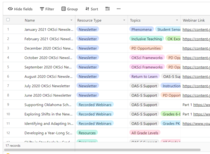
Have you ever wondered how you could access the resources mentioned in previous newsletters or find other supports for implementing 3-dimensional science teaching and learning? The OSDE Science webpage has a new update! There is now a table on the resources page that educators can filter out topics based on their interests. Other changes will be coming soon! Is there something specific you are looking for but can never find? Please fill out this 3-question survey to share your suggestions. We want to make sure the changes made are useful for educators so would love to hear your feedback!
|
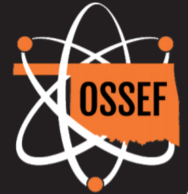
Oklahoma State Science and Engineering Fair Virtual Community Day
This year the Oklahoma State Science and Engineering Fair (OSSEF) will be hosting a virtual Community Day on Saturday, March 27th! This free, online event allows everyone to check out all the amazing research projects Oklahoma students have been working on this year! You'll also have the opportunity to explore the virtual Exhibit Hall to chat with college and career specialists, learn about opportunities at Oklahoma State University, and so much more! This Community Day is a great way for students and educators to learn more about the science and engineering fair, and maybe participate next year! To learn more about this event download this flyer.
|
 Community Collaborative Rain, Hail, and Snow Network
Looking for a way to bring community science into the classroom? Check out this citizen science opportunity! The Community Collaborative Rain, Hail, and Snow Network (CoCoRaHS) is a national community-based network of volunteers who measure precipitation each day in their own backyard or community. These measurements help to fill the gaps in existing weather networks, such as the Oklahoma Mesonet at the National Weather Center, and the data are used by the National Weather Service, the agricultural community, and other scientists.
Every year, CoCoRaHS has a March Madness campaign where each state across the country competes for the “CoCoRaHS Cup” by recruiting the most observers. Help Oklahoma compete for the CoCoRaHS by signing up at cocorahs.org and ordering the official CoCoRaHS rain gauge.
Look out for Facebook and Twitter posts from the Oklahoma Mesonet to enter for a free rain gauge raffle! If you have any questions, please contact Charles Kuster at charles.kuster@noaa.gov.
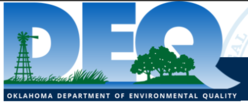
Free School Chemical Disposal
Are you in a new school or a new classroom this year? Do you teach science and just found a stash of outdated or unusable chemicals and don't know what to do with them? Even if you've been in the same classroom for years and the problem has only magnified, the Oklahoma Department of Environmental Quality (DEQ) can help! The DEQ is currently accepting applications for the School Chemical Disposal Program which removes unused, outdated, and potentially dangerous chemicals from school laboratories across the state at NO CHARGE to the school! The goal of the program is to create a safer laboratory environment in Oklahoma schools and prevent any chemical disasters. For questions about the program please contact Katrina Pollard at katrina.pollard@deq.ok.gov or (405) 702-5112.
|
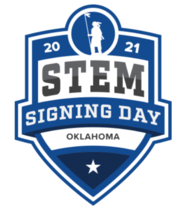
2021 Oklahoma STEM Signing Day
STEM Signing Day celebrates high school seniors from across the country who choose to pursue STEM education at technical programs, two- and four-year colleges and universities. Just like signing days for athletes, STEM Signing Day honorees sign a letter of intent to pursue their STEM goals. This year, for the first time, the 2021 STEM Signing Day, Presented by Boeing and Powered by Tallo, is coming to Oklahoma! If you know a student following this career path, encourage them to apply for this program. Winners will be selected based on their strength, completeness and merit of their Tallo profile and STEM Signing Day application. Students selected as STEM Signing Day honorees will be recognized at a virtual STEM Signing Day in April and have the opportunity to sign up for a mentorship with Boeing.
|
|